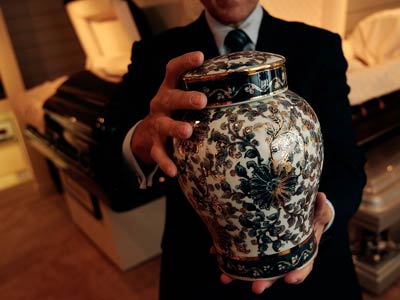The COVID-19 pandemic has re-shaped our society and affected all of us at some level. One of the most tragic aspects of deaths occurring during our lockdown phases has been the inability of families to come together for a funeral service and to grieve together.
Funeral homes have been forced to quickly adapt to new ways of serving families. This has led to a further increase in cremation services and implementing technology to offer online funeral arranging, document submission, and live-streaming of services.
The funeral industry has previously been critiqued as being slow to adapt to change. During this pandemic, many funeral businesses had to rapidly shift their business strategy. An industry that was slowly responding to new technology, has witnessed exponential growth in embracing technology.
How has COVID-19 impacted on funeral home services?
Social Distancing
The biggest impact has been the impact of social distancing. In many cases, this has prevented any funeral services being held. For other families, it meant the difficult task of choosing those selected to attend the limited attendance number allowed at funeral services.
Grieving and saying goodbye affects everyone differently. Not being able to physically see a loved one to say goodbye, or attend a funeral service, has left many bereaved family members struggling even more to come to terms with a death.
Social distancing is something that has changed how we all go about our daily lives. I have found it strange to have to stop hugging family and friends. And, a funeral is a time when we most embrace our social selves and aim to impart compassion by touch.
Delaying services
In some areas, funeral homes and crematories have been so overwhelmed with death cases, that services have not been able to go ahead in a timely fashion. Instead of being able to arrange services in the days following the death, families have had to wait weeks before their loved one could be laid to rest or cremated.
This has put a strain on funeral homes to cope with the storage of remains, be it embalmed remains or refrigerated remains. Normally, the majority of funeral locations deal with dispositions as they occur and only have a limited capacity to store bodies. Some funeral homes had to bring in mobile refrigeration units to help them cope with the additional storage needs. This obviously increased overhead costs for a funeral business without the opportunity for planned provision of additional storage expansion.
 Technology
Technology
Technology has been slowly adopted by the funeral industry. For many funeral businesses, it was the era of setting up a website, offering online obituaries, offering online e-commerce for flowers and other funeral products. Those a little more savvy had added options such as web-casting funeral services or offering an online funeral arranging portals.
With the impact of COVID, technology became a vital tool to connect with families and maintain services. Web-casting and online arrangement portals became valuable tools to assist funeral directors and families alike. One of the biggest adaptations funeral businesses are making is to add facilities for families to remotely sign and authenticate permissions and authorizations. Docusign suddenly became the ‘go-to’ document processing facilitator.
Direct Cremation as the funeral alternative
Cremation services were already on the increase. Nationwide the cremation rate was approaching 55%. But the rate at which direct cremation has grown over the last five months will most surely have a significant impact on the final cremation rate for 2020 and may impact on cremation prices in the future.
Many families had no option but to opt for a direct cremation in the height of the pandemic. It was their only solution to arranging a dignified disposition for their loved one. Then, we have the economic impact of the lockdown, and those families struggling financially who had little option but to opt for a low-cost direct cremation service.
The COVID pandemic has brought death as a threat and reality into all our lives. As a consequence, it has become a little more acceptable to discuss death and funeral options. As a result, we are observing an increase in interest in cremation planning. Especially, in the age range of ‘senior’ individuals, who want to remove the cost and stress from their children.
As with any crisis, it will leave a legacy, and there will be those businesses that adapt, adopt, and become adept. I think it will be some time yet before we can evaluate the full impact on the “last responder” industry.


